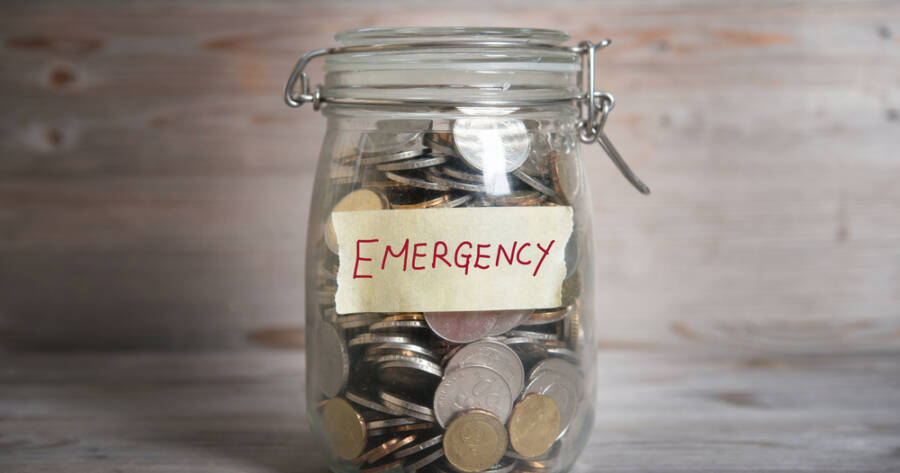Financial stability is a pillar of household security, but life can often throw unexpected financial challenges our way—from sudden medical expenses to urgent home repairs. An emergency fund can potentially safeguard against these surprises, providing peace of mind and financial resilience. By understanding its importance and learning how to effectively build one, households can better prepare for life’s unpredictable twists and turns. This article explores why an emergency fund is a necessity and outlines practical steps for creating one.
Understanding the Necessity of an Emergency Fund
An emergency fund is essentially a financial safety net, designed to cover unforeseen expenses and prevent financial ruin during difficult times.
Unexpected Expenses
Life is inherently unpredictable. Situations such as a major car repair, sudden job loss, or unexpected medical bills can arise, creating stress and potentially leading to debt if unprepared. An emergency fund could provide a financial cushion in these scenarios, potentially covering costs without needing to resort to credit cards or loans that accumulate interest.
Financial Security and Peace of Mind
The psychological benefits of having an emergency fund should not be underestimated. Knowing that there is a financial buffer available could reduce stress and anxiety related to money concerns. This peace of mind can allow individuals and families to focus more on their daily lives and long-term financial goals, without the constant worry about what might happen next.
Determining the Right Size for Your Emergency Fund
While the benefits of an emergency fund are clear, determining the ideal fund amount is crucial for effective financial planning.
General Guidelines
Financial experts often suggest that an emergency fund should cover three to six months’ worth of living expenses. This range is generally recommended as a baseline to weather most short-term financial disruptions, although the exact amount may vary based on individual circumstances such as job stability and overall financial situation.
Personalizing Your Fund
Consider personal factors when deciding on the size of your fund. If you have a stable job in a growing industry, a smaller fund may suffice, whereas freelancers or those in volatile fields might benefit from a larger cushion. Additionally, evaluating regular monthly expenses can help determine a realistic and practical savings goal, aligning with your lifestyle and financial commitments.
Steps to Building an Emergency Fund
Creating an emergency fund from scratch may seem daunting, but breaking it down into practical steps can simplify the process.
Setting a Savings Target
Begin by setting a clear and realistic savings target based on your financial assessment. Break this target down into smaller, manageable goals and establish a timeline. This approach could make the process less overwhelming and help track progress more effectively.
Automating Savings
Automating savings can significantly aid in building an emergency fund. By setting up automated transfers from a checking account to a dedicated savings account, you can ensure consistent contributions without the need for manual oversight. This “set it and forget it” strategy can help build a fund steadily and reliably over time.
Cutting Unnecessary Expenses
Reviewing monthly expenses to identify areas for potential savings can accelerate the growth of your emergency fund. Consider cutting back on non-essential expenses, such as dining out or subscription services, and redirect these savings toward your emergency fund. Small adjustments to daily spending habits could collectively make a substantial impact.
Maximizing the Fund’s Value
Once an emergency fund is established, managing it wisely can enhance its value and utility.
Choosing the Right Account
Parking your emergency fund in an easily accessible and interest-bearing account can help it grow over time. A high-yield savings account or money market account typically offers both liquidity and interest, allowing your fund to earn a bit more passively while remaining readily available when needed.
Regularly Reviewing and Adjusting
Reassessing your emergency fund periodically ensures it aligns with your financial situation and life changes. Income fluctuations, changes in household size, and lifestyle adjustments all impact financial needs, making it important to review and adjust your fund size as necessary to maintain adequate coverage.
Addressing Common Challenges
Building an emergency fund is not without its challenges, but being prepared can help overcome them effectively.
Balancing Debt and Savings
Many households find balancing debt repayment and building an emergency fund challenging. Prioritizing high-interest debt while contributing smaller amounts to an emergency fund could strike a balance, allowing for gradual debt reduction while still establishing a financial cushion.
Avoiding Temptation
The temptation to dip into an emergency fund for non-emergencies is a common hurdle. Clearly defining what constitutes a genuine emergency and maintaining discipline to access the fund only when necessary can preserve its intended purpose and provide protection when truly required.
Establishing Lifelong Financial Resilience
Building and maintaining an emergency fund requires discipline and forethought, yet the long-term benefits significantly outweigh the effort. By establishing a financial safety net, households can better navigate unexpected challenges with confidence and security.
Whether addressing sudden expenses or providing peace of mind, an emergency fund acts as a critical element in achieving and maintaining financial resilience. Through careful planning, disciplined saving, and regular evaluation, an emergency fund becomes more than just a savings account—it transforms into a powerful tool for enduring life’s uncertainties.

